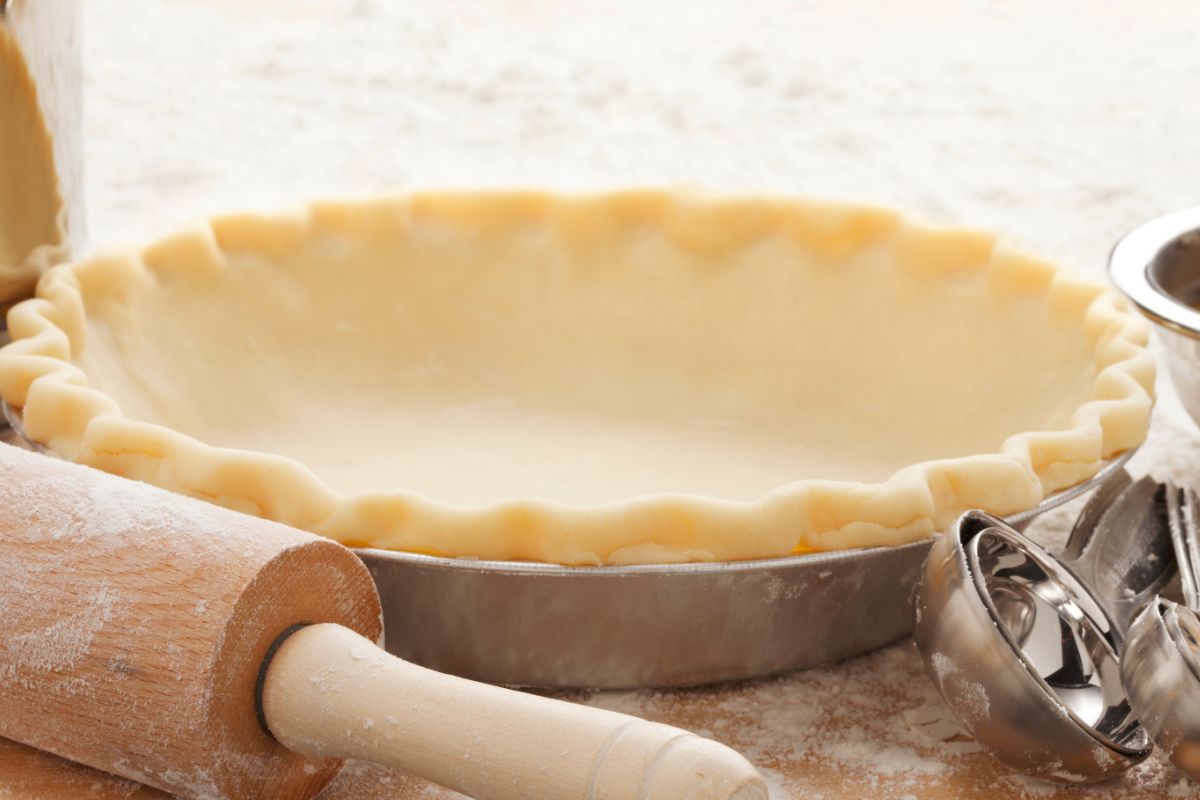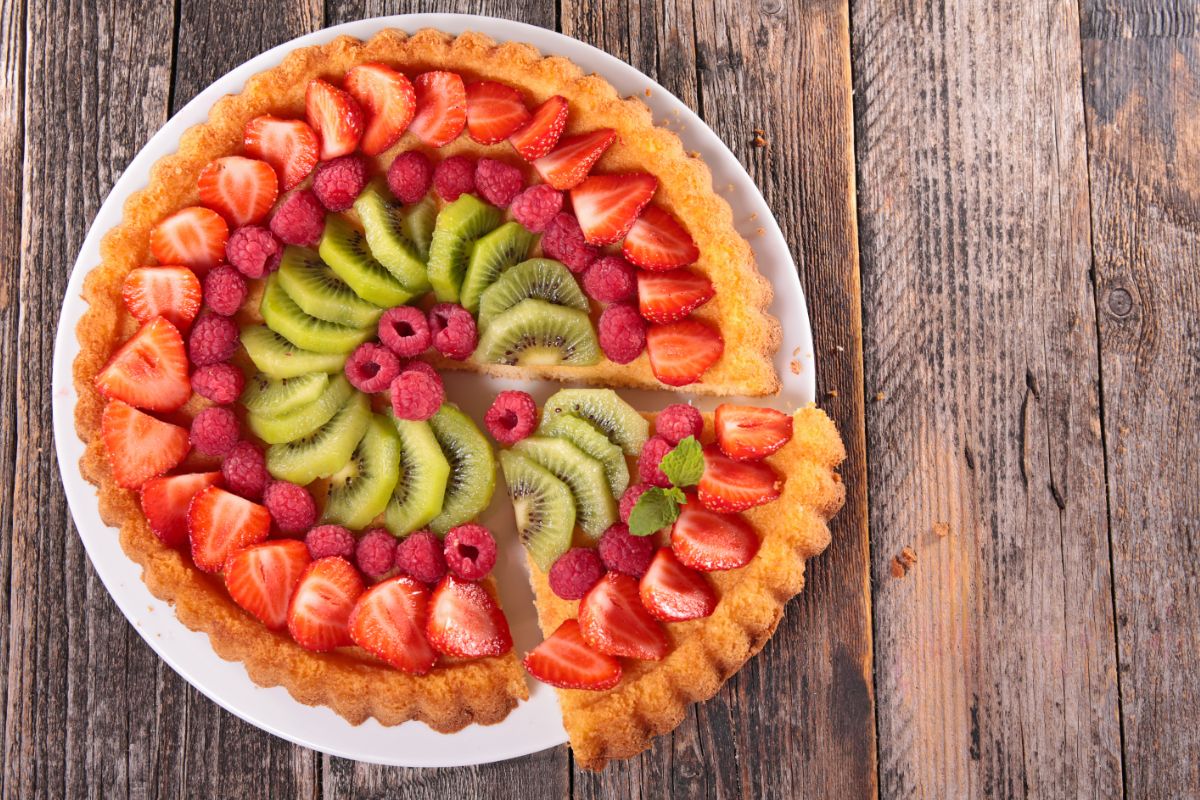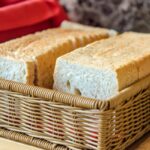There is a certain amount of worry when you put any sort of pie into a preheated oven. No matter how delicious the filling is, how much time you have labored over it, or how closely you have followed the recipe, some doubts still remain.

A lot of that is down to the pie crust, specifically that that edge can brown far quicker and burn before the rest of the pie has sufficiently cooked. By applying a layer of aluminum foil, you can ensure that the pie crust is well cooked but the timing is important.
Getting that timing right can make sure that your pie looks great while the crust has that much-heralded crispiness.
In this guide, we will look at when you should cover a pie crust with aluminum foil, how to make an aluminum foil ring, and why you should cover a pie crust with aluminum foil. We will also look at why you need to be careful when baking a fruit pie.
When You Should Cover A Pie Crust With Foil
There are typically two occasions when you should cover a pie crust with aluminum foil. These include during the blind-baking and when the pie is in the oven to bake with the filling.
Covering A Pie Crust During Blind Baking
A lot of pie recipes will include an initial step which is called blind baking. This is where the entire pie crust is baked on its own before the filling is added.
The main reason for this is so that the pie crust has been given a chance to firm up and brown before the filling is added. You can use a layer of aluminum foil to cover your pie crust during blind baking as it will still cook sufficiently.
Leave the oven to preheat to a relatively high temperature then cover the pie crust with aluminum foil and place on pie weights to bake for around 15 minutes.
The pie weights will keep the aluminum foil in place so, when both are removed, the pie crust should be partially baked. You can poke holes into the pie crust and then let it cook uncovered for another 15 to 20 minutes too.
Another method that may seem a little strange is to create the pie crust, lay it in the pie pan, and then freeze it. You can then cover the frozen pie crust with aluminum foil, apply the pie weights then bake it at a more even temperature.
Simply leave the foil and pie weights on and the pie crust should blind bake well. With this method, you do not even have to poke the pie crust with a fork.
Covering A Pie Crust While The Pie Bakes
While the easiest way to cover your pie crust while the pie bakes is to use a ring of aluminum foil (more about that later), there are alternative methods.
These are ideal if you simply have no aluminum foil in the house as you can buy a pie crust shield that you can use every time you bake a pie.
These come in specific sizes for 9” and 10” pie crusts so find the right one for your pie pan and apply it to create delicious and well-cooked pies.
How To Make A Foil Ring
Cooking any pie in the oven typically means exposing the edge of the pie crust to heat. To protect your pie crust, you need a roll of aluminum foil and you can create a foil ring really easily.
This is an ideal shape to cover the outer edge of your pie crust and ensure that the crust bakes well alongside the filling. All you need with the aluminum foil is some scissors and a kitchen worktop.
- Cut a square out that will be sufficiently large enough to cover the pie completely.
- Fold that piece of aluminum foil in half lengthways.
- Fold the aluminum foil into quarters and then cut the outer open sides to create a rounded corner.
- Cut out the center along the same curve so you have a ring that measures around two inches and you can put the scraps of foil into the trash can.
- Unfold the aluminum foil to reveal a ring that you can lay over your pie to cover the outer edge of your pie.
- Crimp the edges of the aluminum foil with your fingers around the edge of the pie crust so the aluminum foil ring remains in place before you place the pie into a preheated oven.
- With around 20 minutes of baking time remaining, remove the aluminum foil ring and return the pie to the oven to allow the edge of the pie crust to crispen up.
Why You Should Cover A Pie Crust With Foil
Baking can be an exact science and while you can follow the recipe exactly with the ingredient measurements, you should also be prepared for the baking.
Covering a pie crust with aluminum foil is typically a surefire way to prevent burning.
Even after you have applied an aluminum foil ring and the edge of the pie crust is not quite done, you can remove the foil ring until the browning is consistent with the rest of the pie.
After all, once the pie crust has burned it is far more difficult to retrieve it than when it is underdone and you simply need to bake it for a few minutes longer.
Be Careful With A Fruit Pie

Even after you have taken your pie out of the oven, you should still be careful with it. You may believe that as the pie crust is a wonderfully tempting shade of golden brown that your mission is over.
However, be patient with it as the next few minutes are crucial. Sure, you should know that a pie is best served warm but one with more sugar in the filling should be left to cool down.
This is particularly important for fruit pies as you should wait before slicing them. This may seem difficult when it smells so good and you have spent so much time over it yet patience is key.
Fruit pies tend to bake at a higher temperature as the middle needs a bit more heat in the oven to cook sufficiently which means it will need a bit longer to cool down.
The sugar and starches in the filling need time to set or you will be left with a syrupy middle instead of a deliciously gelatinous one.
Final Thoughts
With the best of intentions, your pie may still come out burned and there can be some simple reasons for that. One is not covering the outer pie crust as it leaves it exposed to the heat of the oven and will tend to burn quicker than the rest of the crust.
Another is the baking temperature as you may think adding a few degrees is fine if you are in a rush, which is even more problematic if you have hot spots in your oven.
Always follow the recipe as the temperature will be correct and setting the oven at a higher temperature will not deliver the best-intended results.
Frequently Asked Questions
What Is The Best Way To Successfully Store A Pie Overnight?
Should there be leftover pie after a meal, you will want to make sure that the pie remains in great condition. The best way to successfully store a pie overnight is to keep it in its original pie pan.
You may want to serve it like that to avoid the worry of removing it entirely and for the bottom crust to break.
Leftover pie in its pan can be ideally covered with aluminum foil but there are alternatives if you do not have any aluminum foil in the house. These include an overturned bowl, or if cooled down sufficiently, plastic wrap.
For each of those coverings, the leftover pie should then be kept in the refrigerator to stay fresh as it will have a limited shelf-life. However, for individual slices, you can keep each one in an airtight container or wrapped entirely in aluminum foil.
How Do Bakers Maintain A Crispy Pie Crust On A Pie They Have Left Overnight?
There are several tricks that bakers use to ensure that their pie crust remains crispy, even when they return to it after a day or so.
One of those tricks is to simply use less water when creating the pie crust itself as you may only need so much that the dough comes together.
Most bakers would insist that you blind-bake the crust to prevent a soggy bottom when you apply the filling.
Applying egg wash onto the pie crust before it breaks gives the pie a lovely sheen yet removing any excess moisture from the filling is also important for the integrity of the pie crust.
- How To Reheat A Cheesesteak - November 5, 2023
- What Are Three Must Have Kitchen Knives? - September 22, 2023
- How To Protect Edges Of Pie Crust - June 15, 2023








